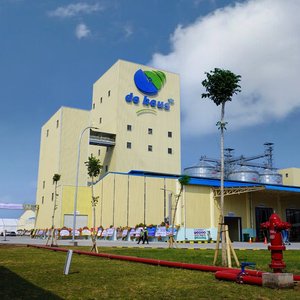The Peruvian Ministry of Production (PRODUCE) announced that the second anchovy season in the north-center zone will start on November 29, 2022, with a quota of 2.283 million tons. The quota is 11.5% higher than the previous year (2.047 million tons) which was 26% below the 2020 quota (2.78 million tons).
Fishmeal and fish oil production remains stable in 2022
Based on IFFO’s membership, which accounts for 55% of global marine ingredients production, the cumulative total fishmeal production for the first nine months of 2022 was in line with the cumulative production reported through September 2021. USA, India, the Iceland/North Atlantic area and the African countries were the regions considered in this report that increased their cumulative production during the first nine months of 2022. The total cumulative production of fish oil in 2022 was 4% up than the cumulative production reported through September 2021.
“The European countries, the US and the African countries were the regions that reported a year-over-year increase thanks to the extraordinarily large capelin quota and catch in Northern Europe, a rebound in the landings of menhaden in the Gulf of Mexico, and healthier catches in South Africa with respect to the same period in 2021,” said Enrico Bachis, IFFO’s market research director.
“The Peruvian anchovy historically has been providing the raw material to produce roughly 20% of the global tonnage of fishmeal and fish oil, with its prices becoming a world´s benchmark for all trades of marine ingredients. The quota of the second fishing season indicates a healthy biomass, estimated at 6,826,839 metric tons. Once again, the positive effects of the responsible management of the largest reduction fishery in the world is confirmed,” Bachis said.
China’s marine ingredients production remains subdued
After the difficult first half of the year, domestic production of marine ingredients seems to be struggling also in the second half of 2022. Supply remained subdued through October as raw material from wild captures was reported below expectations. La Niña phenomenon affecting the distribution of the local biomass and the stricter environmental measures imposed by the Chinese authorities to protect the domestic fishery resources are often cited as the main causes for the disappointing performance. Nonetheless, cumulative imports of foreign fishmeal are slightly below last year’s levels, following the late start of the aquaculture main season back in May and the financial losses of the pig sector in the first part of the year.
Aquafeed production in September is expected to have decreased month on month, as consumption was severely affected by new COVID-19 lockdowns.













